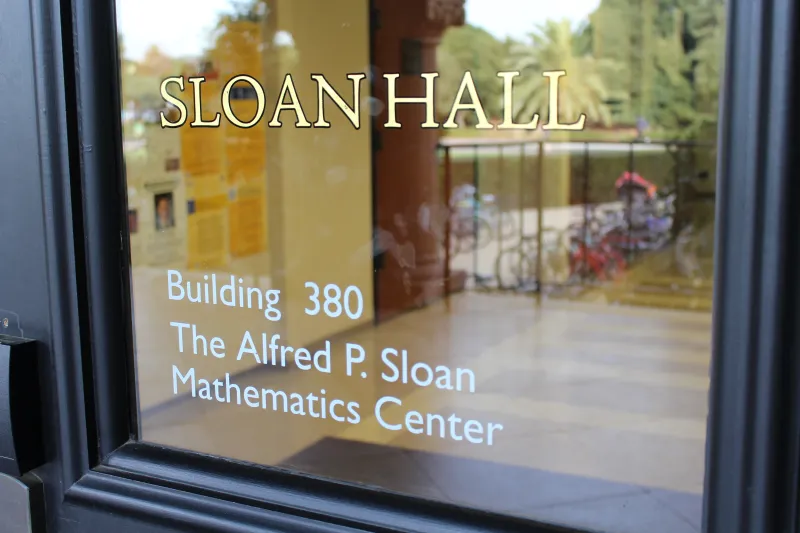Buzzing with a sense of renewed enthusiasm and excitement after (high school) senioritis has (hopefully) left us, each freshman is faced with an intimidating choice even before even setting foot on campus. “Which math class, if any at all, should I take?” The placement test is hopelessly inadequate at imbuing us with a sense of confidence in making that choice. Many take the online test with an attitude of resigned compromise (Who wants to sit down for a placement test which spits out evaluations about their academic abilities immediately after high school has ended?) and is hilariously incomprehensive at making those evaluations in the first place.
Nevertheless, invigorated with innocent eagerness to start college, we venture into the depths of Carta and Reddit in hopes of making an informed decision.
Carta is flooded with cautionary tales of the old MATH 51: “Linear Algebra and Differential Calculus of Several Variables.” As one student recounts, “It is very difficult to understand the textbook and moves at a very fast pace if you have no background in linear algebra. Unless you need the class I wouldn’t recommend taking it, but it is doable and office hours help a lot.” Another user gives an equally comprehensive and impactful review, simply reading, “Don’t.” The Daily itself has published an editorial that is titled “Is MATH 51 all you wanted out of your Stanford education?” As one might reasonably predict, it does not sing songs of praise in favor of MATH 51.
These various reviews gesture at the reality that students generally do not take MATH 51 intending to dive head first into intellectual challenge, but rather to fulfill requirements. I am willing to admit that I, too, initially decided to take this class because I felt that my skills in mathematics would only deteriorate if I put it off for another quarter.
As of last year, MATH 51 has undergone a significant revision, employing a new textbook written by Stanford math professors and new methods of increasing engagement. But MATH 51 has continued to retain its horrid reputation from past iterations, and on campus, during International Student Orientation and New Student Orientation, anecdotes of utter horror were swapped when I asked upperclassmen what they thought about MATH 51.
Despite the negative experiences I was recounted, I calmed myself with the thought that I could always “shop and drop,” and thought I might as well attend class for the first few weeks. The arduous process of enrolling in the class only seemed like a premonition for the class itself: before the first day of class, I had to hurriedly arrange an i-clicker, download the textbook and give myself a pep talk. I grabbed a seat in lecture, and little did I know at the time, sat down in the class that would soon become one of my favorite classes of the quarter.
The first couple weeks are deceptively straightforward and unrepresentative of the course in general. But even when the course picked up, it was more of a gradual speedup than a sudden jump. The class is structured to help the student at every turn: a pre-class questionnaire, administered to survey topics that students find most confusing, tangibly results in changes the course staff makes to how the class is taught.
I have noticed the textbook changes in places where ambiguous explanations have given way to more accessible ones based on popular feedback. Professors are engaging and at times, even crack jokes. They operate with the consideration that this is a hard class and that there is a lot to cover, and do their best to explain things as simply as possible. They are also aware that most students don’t take this class because they love math, but rather because they need to, and don’t spend time unnecessarily expounding on complex proofs.
For me, they do a great job at piquing interest in how the concepts actually function, while also keeping pace with the class. My professor even put up a survey to gather information about how confident students felt with their skills and offered to bring candy in exchange for the completion of the survey. Office hours and tutors are accessible, and during discussion section we are given worksheets that concretize our understanding of the material.
I am by no means saying that the class is easy or requires a lower-than-average commitment to work, but the class does a great job at constant evaluation and modifying itself to suit itself to the student’s interest best. MATH 51 brings with it the realization that understanding of these concepts is directly linked to utility in the real world. Homework is sometimes difficult, but always empowers understanding of the concept, and the wide variety of skills that the class develops come together and complement each other at the end.
MATH 51 is notoriously known for not being consistent across quarters, but taking this course in fall quarter, one of the quarters that is considered to have a harder curve, I don’t feel the sense of dread that people have often associated with this class. It is the class that I look most forward to, and I am glad that I took this class with an open mind and a resolve to work hard. To future incoming freshmen, if you feel confident in your foundations in math and feel prepared, consider taking this class. Yes, it’s a lot of work, but it’s also extremely enjoyable.
Contact Manya Bansal at manya227 ‘at’ stanford.edu.
